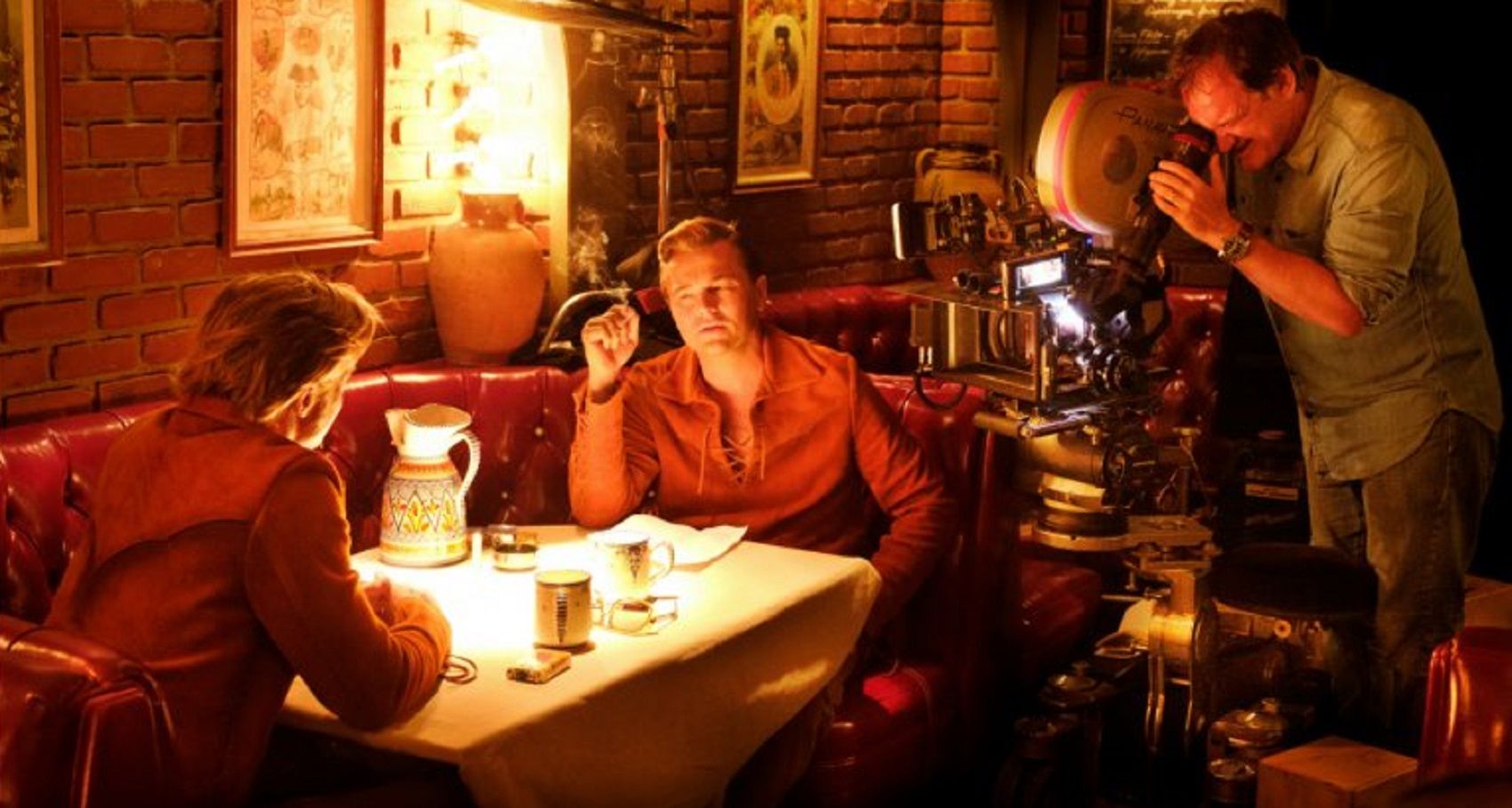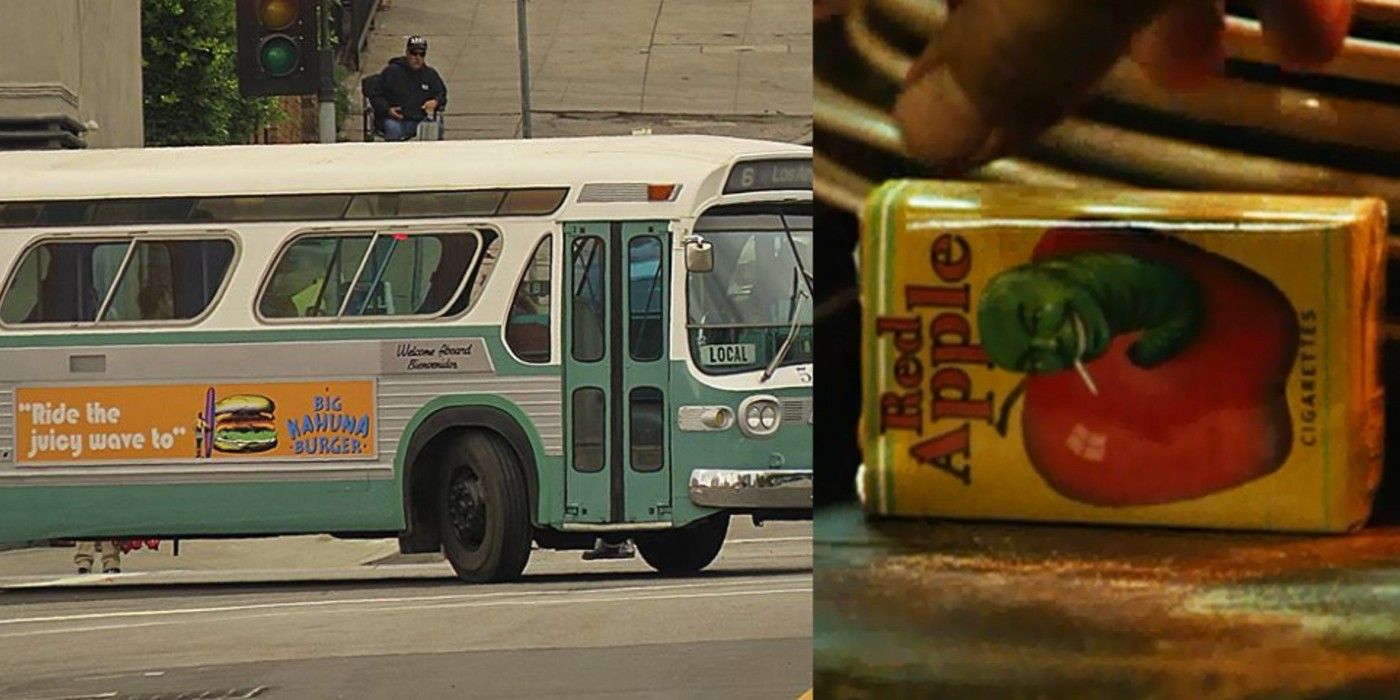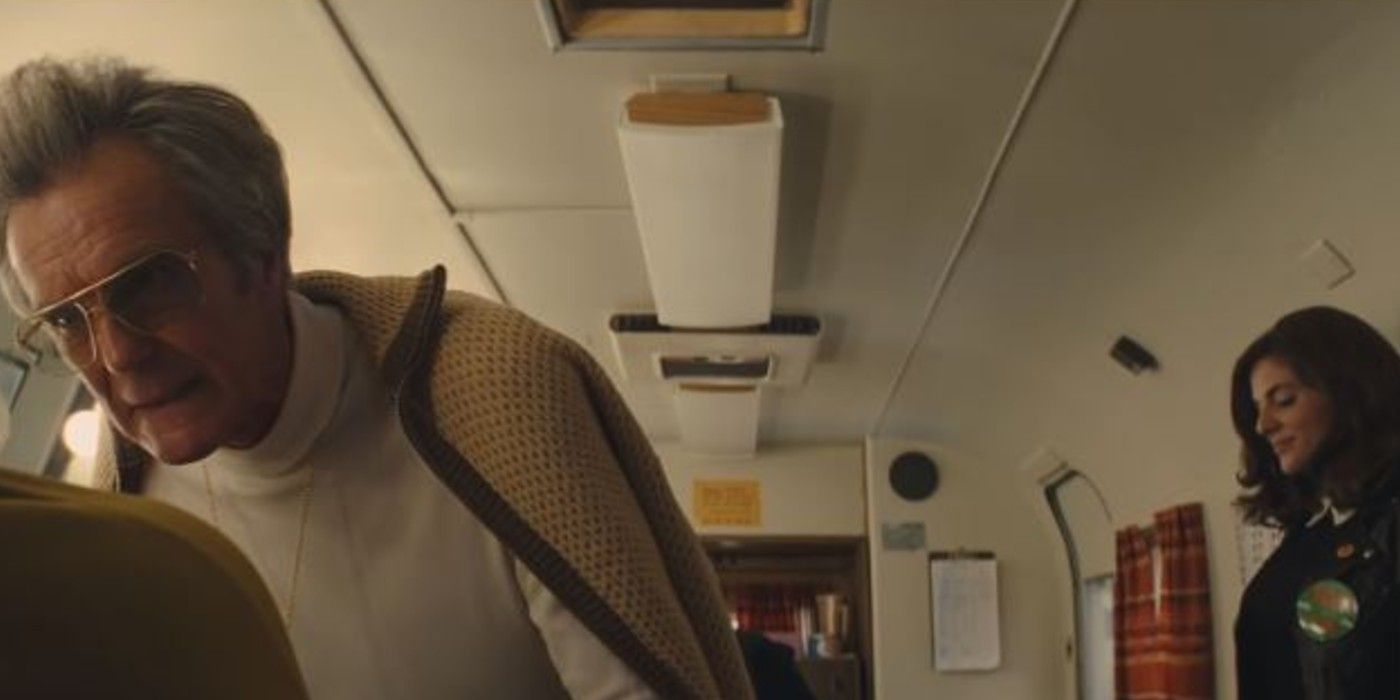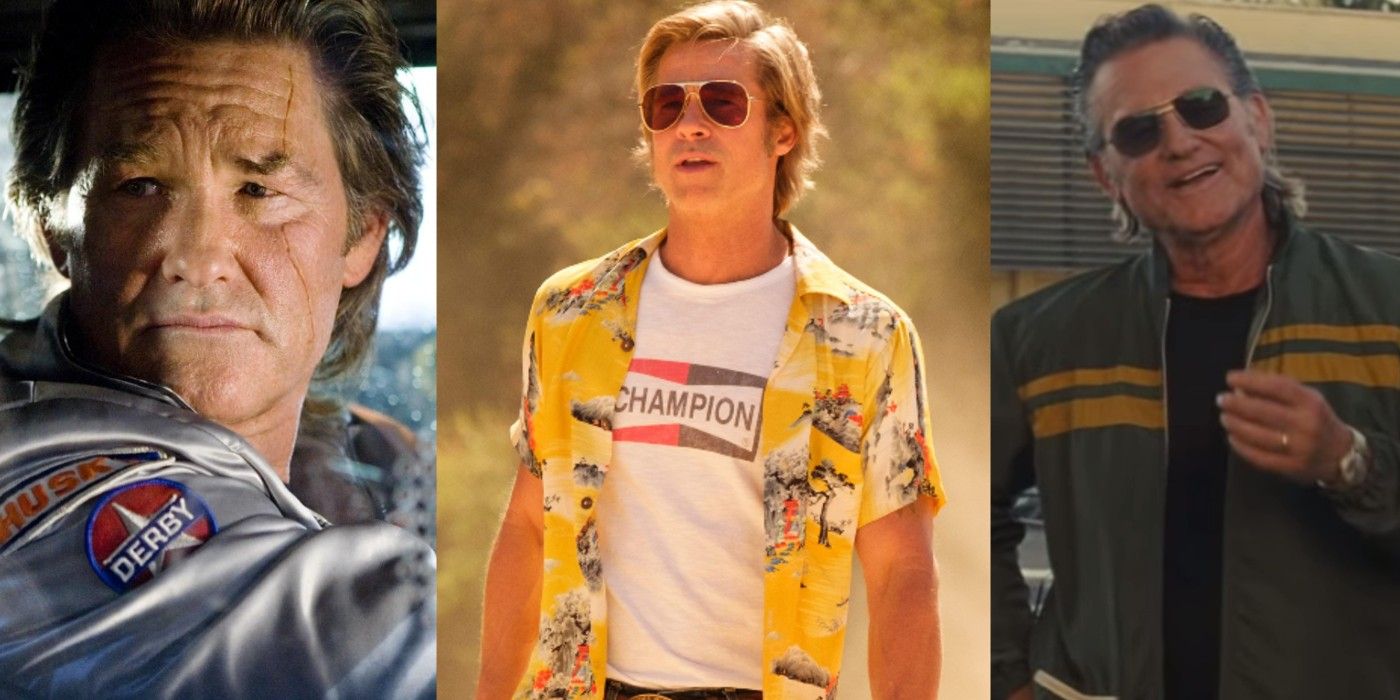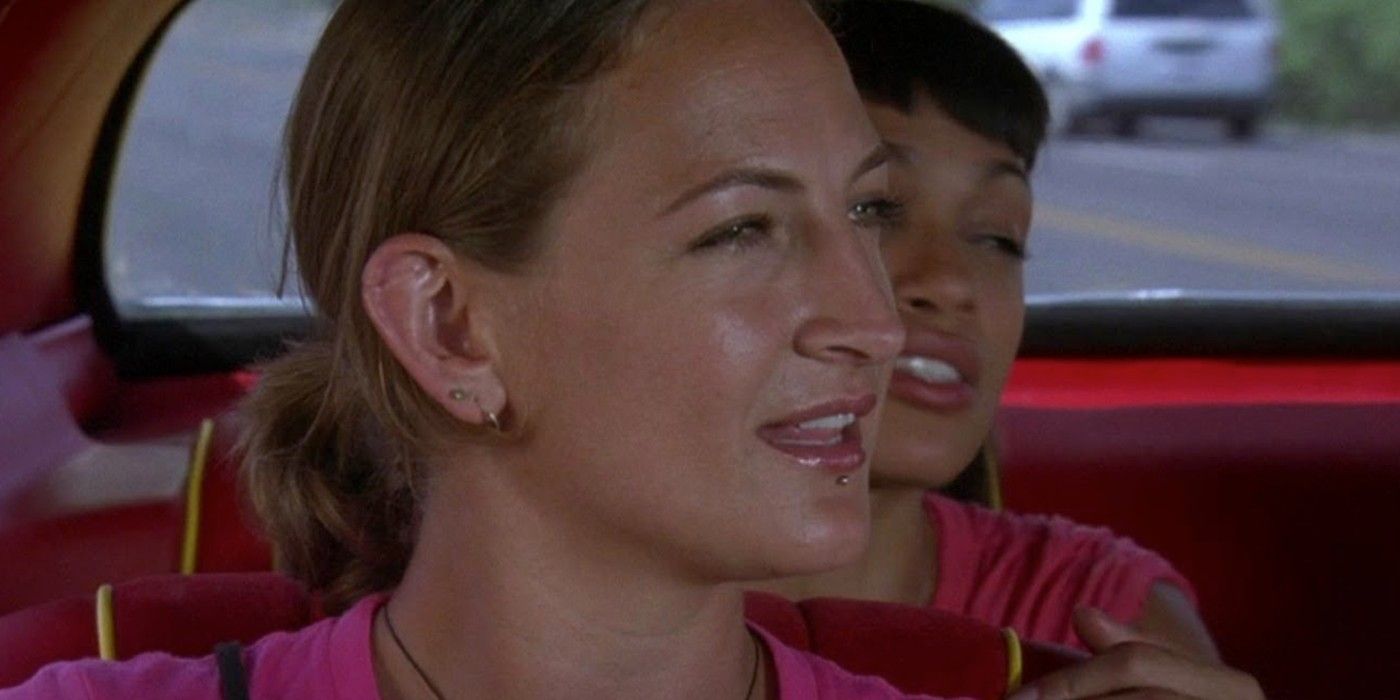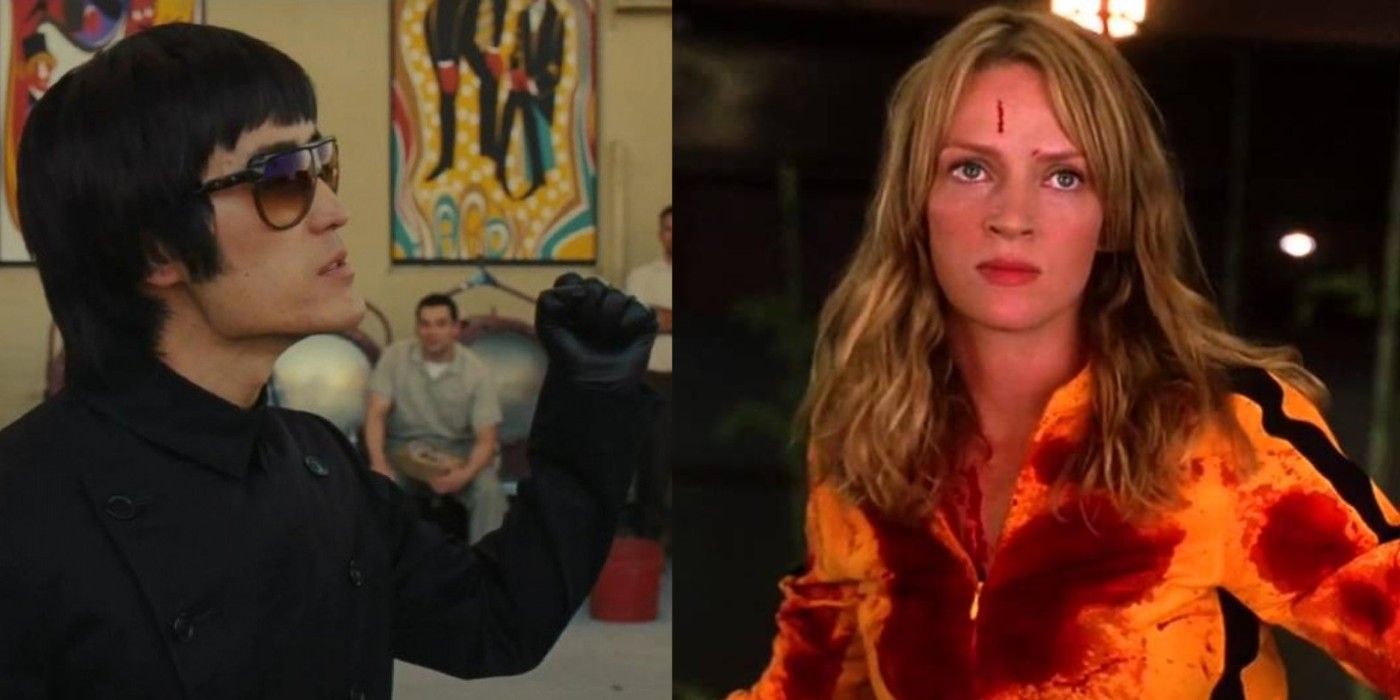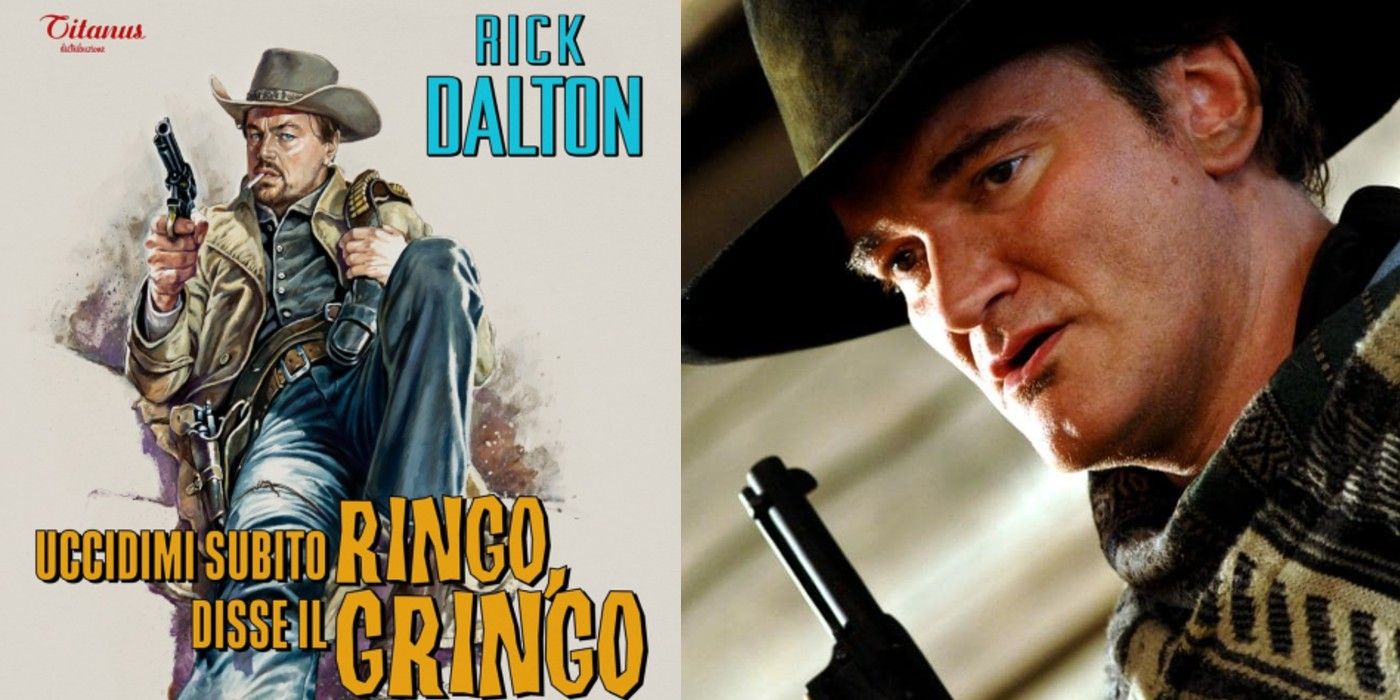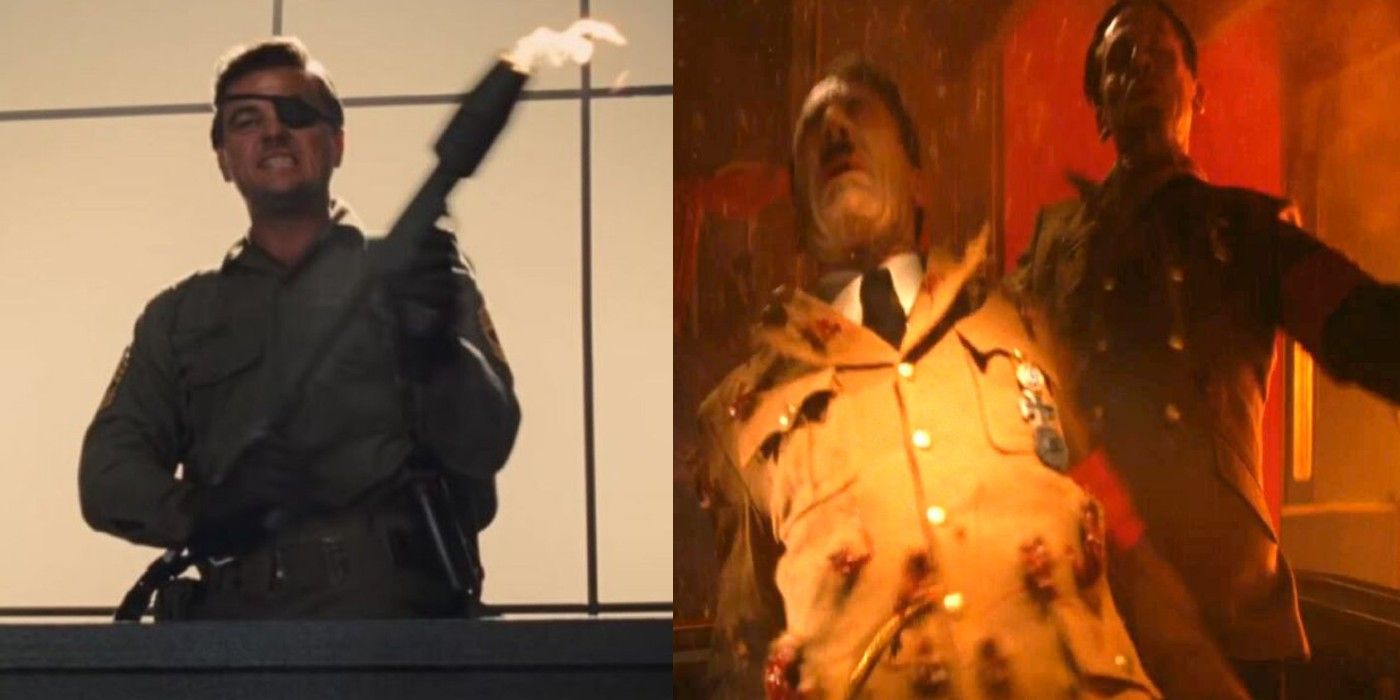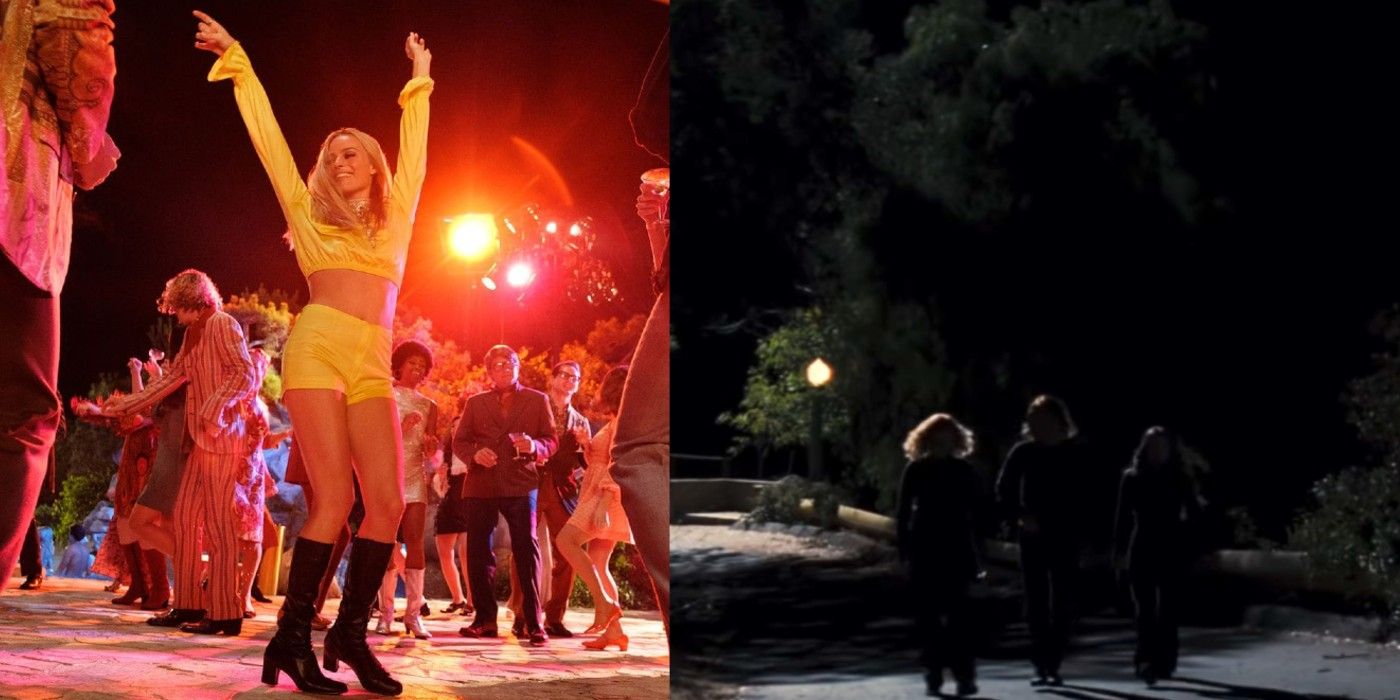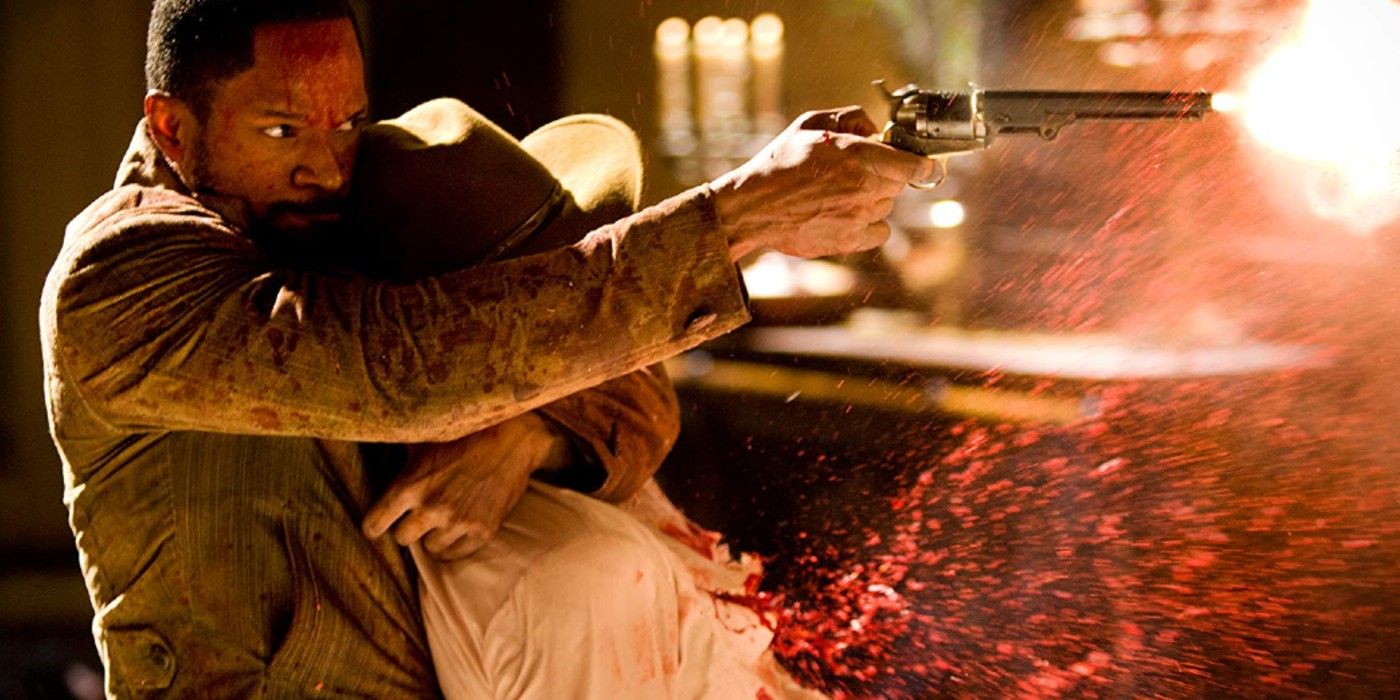Before the Marvel Cinematic Universe made the idea of inter-connected movies being set in a shared universe mainstream, filmmakers like Quentin Tarantino engaged with viewers by dropping in-universe Easter Eggs that linked his movies. Once Upon A Time… In Hollywood, his ninth film, continues this tradition, relying more on thematic links rather than straightforward familial connections or visual call-backs.
Still, Tarantino’s ode to Hollywood in the year 1969 is as Tarantino as a Tarantino movie can get. Filled with homages to his favorite obscure titles, genres, and more, Once Upon A Time… In Hollywood is a visual treat for fans of the celebrated filmmaker. Here are 10 ways that Once Upon A Time… In Hollywood connects with Tarantino’s other movies and the shared universe they occupy.
Big Kahuna Burgers and Red Apple Cigarettes
A hallmark of Tarantino’s movies are the recurring brand names that he created, specifically Big Kahuna Burgers and Red Apple Cigarettes. The burger joint made famous by Pulp Fiction can be seen on a billboard during one of the many driving scenes in Once Upon A Time… In Hollywood.
Meanwhile, Red Apple Cigarettes gets a big shout-out through a full-blown commercial. In a mid-credits scene, Rick stars in an ad for the cigarettes, claiming that they’re the best in town. But when the cameras stop rolling, Rick openly bashes the brand and disses the cigarettes for their horrid taste.
Cut Cameos
Tarantino’s movies are filled with cameos, and Once Upon A Time… In Hollywood is no exception. Michael Madsen (Mr. Blonde in Reservoir Dogs) briefly shows up as an extra on Bounty Law.
Thing is, Madsen’s role was cut short for time. This was luckier compared to Tim Roth (Mr. Pink in Reservoir Dogs), James Marsden, and Danny Strong, whose cameos were cut. Respectively, they portrayed Jay Sebring’s butler, Burt Reynolds and Dean Martin.
Additionally, Burt Reynolds himself was supposed to portray George Spahn but passed before shooting. Spahn is now portrayed by Bruce Dern (Gen. Smithers in The Hateful Eight).
Courtney Hoffman
When he arrives on set with a terrible hangover, Rick Dalton meets director Sam Wanamaker and his costumer Rebekka. Her job is to cover up Dalton’s distinctly heroic features so that he looks more like a bad guy rather than the star of yesteryear’s Bounty Law.
Rebekka is played by real-life costumer Courtney Hoffman, who previously worked with Tarantino on Django Unchained as Christoph Waltz’s personal costumer. She also has costume and wardrobe credits in Baby Driver, Captain Fantastic, and that Tekken movie fans would rather ignore.
Cliff, Randy, and Stuntman Mike
Kurt Russel’s third collaboration with Tarantino hearkens back to their first movie. Once again, Russel is a stuntman who here goes by the name of Randy. Unlike Stuntman Mike from Death Proof, Randy is a nice guy who doesn’t murder girls in his stunt car to get off.
There are no mentions of Stuntman Mike in Once Upon A Time… In Hollywood, though some theorize Randy could be Mike’s father or brother “Stuntman Bob.” If anything, struggling stuntman Cliff has more in common with Stuntman Mike thanks to his shady past involving the death of his wife.
Zoe Bell
Speaking of stuntmen, Tarantino’s frequent collaborative stunt performer Zoe Bell has a cameo as Randy’s wife Janet. She’s the one who stops the fight between Bruce Lee and Cliff, getting mad at the latter for wrecking her car by throwing the martial arts legend at it.
This isn’t Bell’s first speaking role in a Tarantino movie, as she was one of the leading ladies of Death Proof. Starring as herself, Bell led the new group of girls in the movie’s second half and performed her own stunts, including the “Ship’s Mast” on a speeding Dodge Challenger.
Bruce Lee's Legacy
If The Bride’s yellow jumpsuit didn’t make it clear enough in Kill Bill Vol. 1, Tarantino loves Bruce Lee’s films. Lee’s works and words heavily influenced Tarantino’s two-part throwback to kung-fu movies, and now he brings the man himself back to life through Mike Moh’s acting.
Problem is, Tarantino’s depiction of Lee stirred controversy. Lee’s sister and fans didn’t like the way he was portrayed in Once Upon A Time In Hollywood, since he was shown as an annoying braggart. It doesn’t help that Tarantino described him as “arrogant,” which angered Shannon Lee even more.
Cowboys And Westerns
With movies like Django Unchained and The Hateful Eight under his belt, it shouldn’t be too surprising to say that Tarantino is a fan of Westerns, specifically the revisionist Spaghetti Westerns.
The genre makes a comeback in Once Upon A Time… In Hollywood in a very literal sense, with Rick Dalton being a fading cowboy star whose career is revived through Westerns made in Italy. Through Dalton, Tarantino is able to thematically explore an aging Western legend – which was common in Spaghetti Westerns – in ways he couldn’t before.
Killing Nazis
One of Rick Dalton’s movies is The 14 Fists of McCluskey, which features Dalton killing Nazis with a flamethrower. Since Inglorious Basterds is considered fact in the universe of Tarantino’s movies, it’s possible that McCluskey incinerating Nazis was based on actual events and wasn’t just a Roger Corman-tier B-movie idea.
RELATED: 10 Ways Quentin Tarantino’s Movies Are All Connected
Additionally, McCluskey’s one-eyed appearance may be a homage to the original incarnation of Nick Fury in the Marvel comics. A character who, coincidentally, was mentioned fondly by Clarence in True Romance (which Tarantino wrote) and would serve as the foreshadowing for his final look after surviving the fatal shootout.
Changing History
What caught many people off-guard in Once Upon A Time… In Hollywood was that it wasn’t just a love letter to Hollywood circa-1969, but an alternate-history in which Charles Manson’s cultists were killed and their real-world victims lived.
In doing so, Tarantino once again uses fiction to violently rid American history of some of its darkest chapters and provide cathartic fun while doing so. Previously, he blew up slavery (or an embodiment of it) in Django Unchained and ended World War II by shooting Adolf Hitler and the Nazi high command’s faces before blowing up the cinema they were in.
Tarantino And Movie Violence
Before leaving their car, Sadie convinces her fellow cultists to kill Rick and Cliff because they taught them violence through TV. Sadie parrots the beliefs of Nancy Pitman, a Manson fanatic who blamed cowboy shows not unlike Bounty Law for inspiring them.
Tarantino has defended his use of extreme fictional violence, angrily shutting down those who blamed his movies on actual violence. So far, this is his most direct response in film, where he has a Manson cultist cite the (fallacious) connection between real-world violence and cinema… only for her to be torched by a cowboy actor with a flamethrower.

